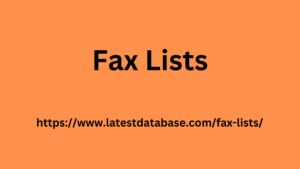ow to Validate Email Addresses Using Scripts
Introduction
Email address validation is a crucial aspect of many web applications. It helps prevent spam, ensures data accuracy, and enhances user experience. While basic validation can be achieved using regular expressions, more robust methods involve checking email address syntax, domain existence, and MX record configuration. In this blog post, we’ll explore various techniques and scripting languages to validate email addresses effectively.
1. Basic Validation Using Regular Expressions
Regular expressions provide a powerful way to match patterns within text. A simple regular expression can check if an email address adheres to the basic format:
This expression ensures that the email address contains a username followed by an ‘@’ symbol, a domain name, and a top-level domain (TLD). However, it’s important to note that this is a basic check and doesn’t guarantee the email address’s validity.
Example in JavaScript:
}
2. Advanced Validation with Domain and MX Record Checks
While regular expressions can validate the email Fax Lists address format, they don’t guarantee the domain’s existence or the availability of MX records for email delivery. To perform more comprehensive validation, you can leverage external APIs or libraries that interact with DNS servers.
Using an External API:
Many APIs provide email validation services, often with additional features like syntax checking, deliverability verification, and spam risk assessment. These APIs typically return a boolean value or a more detailed response indicating the validation status.
Example using a hypothetical email validation API:
Using a DNS Library:
You can also directly interact with DNS servers using libraries like dns in Node.js or resolv in Python. These libraries allow you to query for domain existence and MX records.
Example in Node.js:
3. Additional Considerations
- User Experience: Avoid overly strict validation Telegram Database Users Material rules that might hinder user signup or form submission. Consider providing helpful error messages and guidance to users.
- Performance: If you’re performing extensive email validation, optimize your code for performance to avoid delays in user interactions.
- Security: Be cautious when handling email addresses to prevent data breaches or unauthorized access. Consider using encryption and secure storage methods.
- Real-time Validation: For a better user experience, implement real-time validation as users type in their email addresses. This can be achieved using JavaScript and event listeners.
Conclusion
Validating email addresses is essential for maintaining data integrity and preventing spam. While basic regular expressions can be used for initial checks, more advanced techniques involving domain and MX record verification provide a more robust solution. By combining these methods and considering user e

